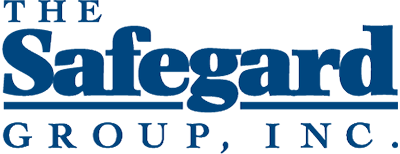
- Claims & Risk Management
- No comments
Every facet of your organization impacts your cost of risk. Regardless of the type of business you run, many find it difficult to quantify their true cost of risk because it includes both pure and speculative risk. The impact negative publicity would have on your revenue is much harder to calculate than insurance premiums or lost productivity due to equipment downtime. But both qualitative and quantitative analysis is important, your total cost of risk is synonymous with price-the price of your risk management program.
The Safegard Group, Inc. takes a total cost of risk approach by tailoring your risk management program to look to the end game-your price. To reach that goal, we help you:
- Analyze your exposures
- Implement control measures to those exposures
- Determine risk transfer or financing options
- Manage current and future exposures
Identification of Exposures
As part of our risk management interview process, we look to confirm that your risk management approach supports your overall business objectives. As a business owner, what keeps you up at night? If that concern occurred, how would your income or cash flow be affected if there were unforeseen depletions of capital or a shutdown in operations? Discussing the qualitative aspects of your business provides the important details needed to solidify your price.
Exposures are both qualitative and quantitative. Analyses into both offer the foundation for developing forward-thinking approaches to those exposures.
What is your viewpoint on risk? Is your company risk-averse? Is it in a financial position to take on more risk versus transferring that risk to another party or contractually to a carrier? To help determine your risk aversion, it helps to assess your company history. For example, if you are a start-up company, cash flow and funds are typically tight, so you are more likely to be adverse to risk to protect the financial viability of your start-up organization. Conversely, if your company has a 20-plus year history, there are also risks, such as becoming obsolete, stagnant or too conservative with your business plan.
Additionally, we consider your industry, market position and competition in positioning your risk management solution to the changing needs of your business.
Quantitative analysis supports the qualitative interview. We look at the hard numbers and prior losses to identify trends in your performance. We also analyze losses to identify the following:
- Average incurred costs per loss
- Total incurred trends
- Top loss drivers
- Locations with high frequency issues
- Fraud behaviors
- Reporting lag time
- Frequency versus severity ratios
- OSHA-recordable performance
The results of our in-depth analysis will reveal opportunities to approach the critical areas driving your total cost of risk. We will isolate the root causes of these problematic areas and look to implement control measures to mitigate this exposure.
Implementation of Control Measures
Identifying exposures directs us to focus our resources on delivering the best control measures. An estimated 75 percent of commercial insurance expenses are claims-driven. We look to control and reduce this percentage through pre- and post-loss control measures.
A comprehensive loss control evaluation uncovers your strengths and weaknesses. One may have strong management leadership behind his or her initiatives but have no employee buy-in or participation. The Safegard Group, Inc. has the solutions to establish a safety committee, delivering a comprehensive employee safety education campaign to address your exposures.
There are many post-loss or cost containment strategies. A proactive and effective return to work program is one strategy that positively affects your bottom line: offering a bank of modified duty jobs for employees and informing the doctor there is modified work available. Also, establish a relationship with a local occupational medicine clinic. Interview the staff to learn about their services and tour their facilities. Invite the physicians into your business to get a first-hand look and understanding of your operations. By providing them with the details of your operations, they can accurately evaluate reported injuries to confirm if they are work-related.
Fraudulent claim behavior can drive the cost of risk out of control. Anti-fraud tactics include educating employees on the effects of insurance fraud through payroll stuffers and worksite posters and offering safety incentives for solid performance. Also, keeping a motor vehicle accident kit in company vehicles, along with a disposable camera, allows you to document evidence, providing stronger subrogation results.
An active loss control program and post-loss procedures are fundamental to cost containment. Our agency offers comprehensive resources to employ the most appropriate strategies for your business.
Risk Transfer and Financing
Once we have identified exposures and created control measures, we can focus on the remaining exposures to transfer and/or finance. The most basic topics include:
- That amount of risk your business can afford to assume in-house
- Ways in which The Safegard Group, Inc. can assist in contractually transferring that risk to a third party
- The portion of the exposures your organization wants to finance through an insurance policy
Addressing these topics offers a direction as to how to approach financing your risk. Consider current cash flow needs, and determine if account receivables are current. If there is a lag learn how long it is, and if there are there resources available to correct it.
Considerations involve self-insured retentions if you have a mature loss control program and the financial reserves to cover those shock losses that occur. Therefore, consider a combination of insurance and non-insurance strategies.
Manage Your Exposures
Roughly 25 percent of businesses that sustain a major catastrophe are no longer in business within a year’s time. If there is an interruption in your operations, are you prepared?
The Safegard Group, Inc. has the resources for you to develop a comprehensive business continuity plan. This involves backing up your policies and procedures. Through , we offer 24/7 Web access to your critical risk management information, employee education resources and tools to drive down your cost of regulatory compliance; all are ID- and password-enabled for your protection.
Cost of Risk Resources
To develop the most appropriate risk management program for your organization, The Safegard Group, Inc. approaches insurance through a variety of strategies, including:
- Identification processes (qualitative and quantitative)
- Loss analysis tools to uncover exposures
- Implementation of pre- or post-loss initiatives that address cost containment
- Business continuation planning and disaster recovery
- Risk financing options, retained losses or transferred
- Regulatory compliance issues
We work with you to develop a strategic action plan, assist in the execution of the designed risk management program and are committed to the monitoring and support of these initiatives. If you are interested in reviewing your risk management strategies, contact us today at 610-892-7688 or via our contact page to speak with one of our insurance experts.

